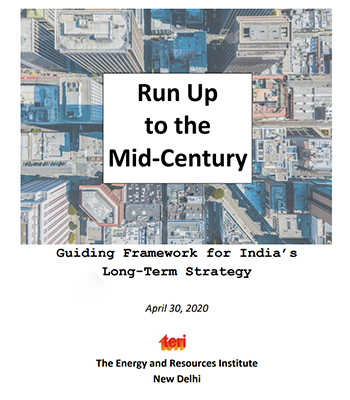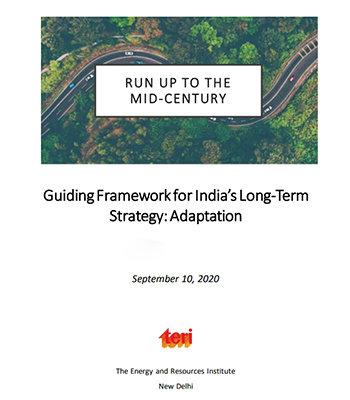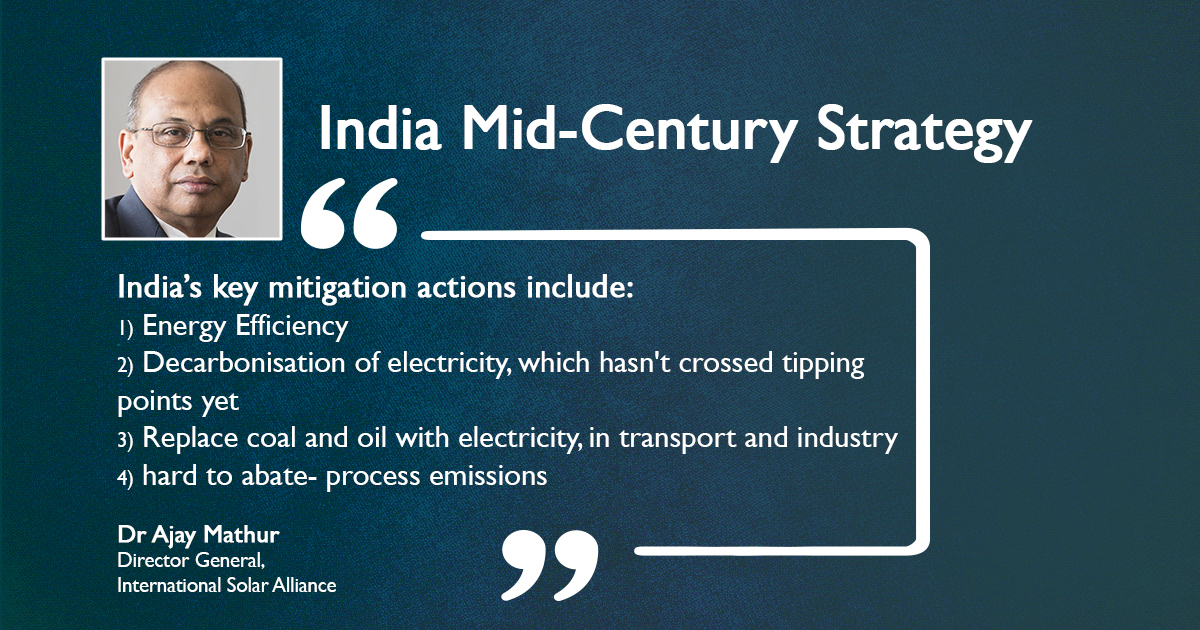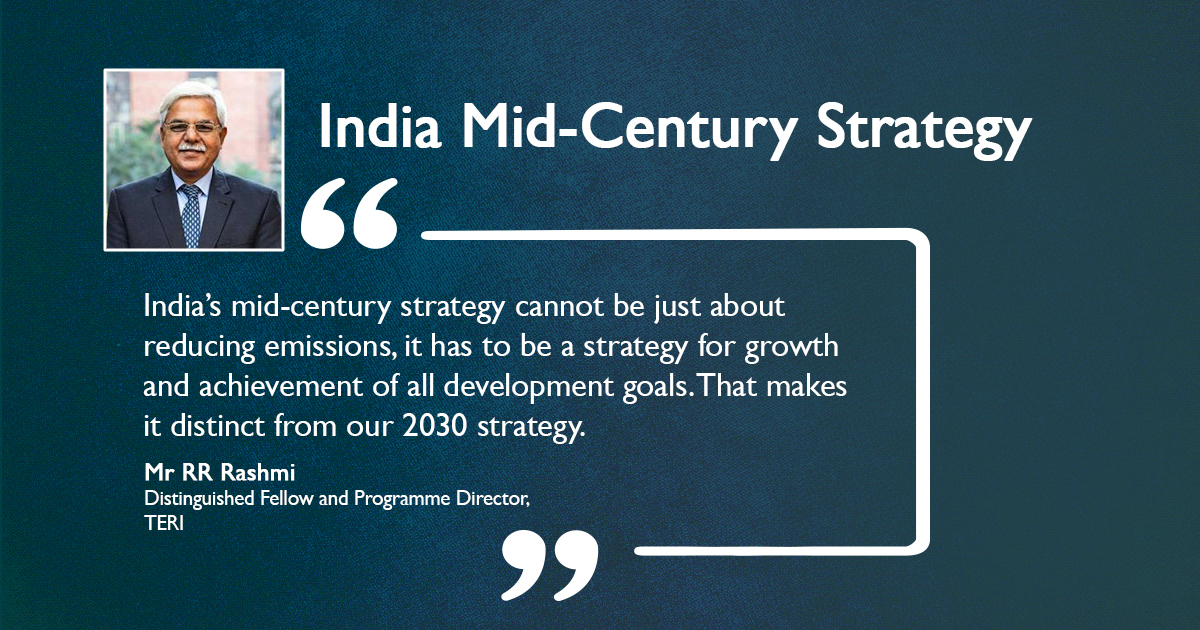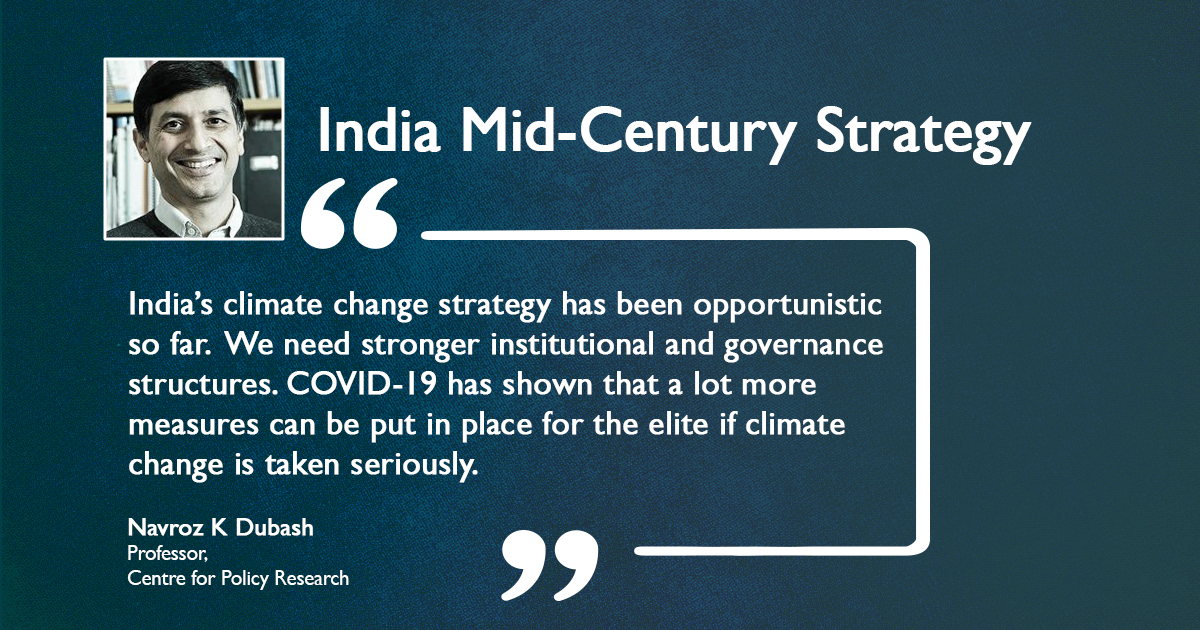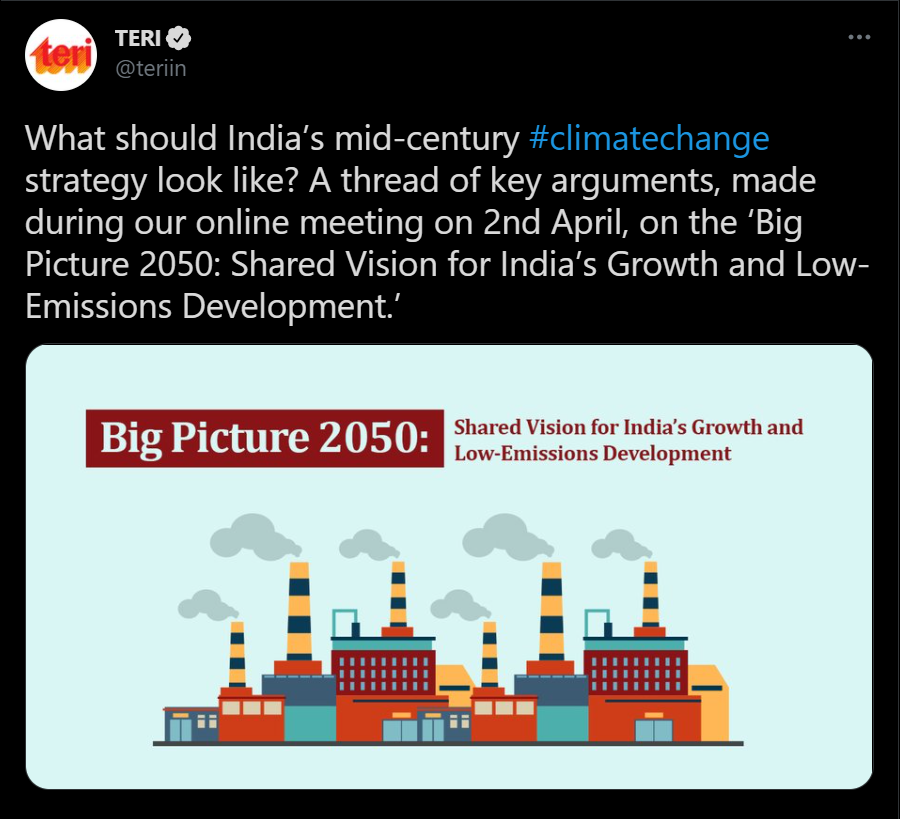Mid-century strategy for India
Achieving net zero emissions by 2050 is key to limit global warming to 2°C. TERI, under this action aims to provide long-term strategies on adaptation and mitigation for India's high emitting sectors to target net zero.

A marked shift in India's domestic policy will be required across sectors in order to achieve net zero emissions by 2050. This activity will delve on the question whether net zero emissions are possible by 2050. The activity will highlight key climate actions in high emitting sectors in India that will take India on the path to achieve net zero emissions by 2050 along with challenges.

A Guiding Framework for India's Long-Term Strategy (LTS) for mitigation has been developed. It suggests that:
- LTS must in effect fulfil two crucial criteria, namely, a) Domestic developmental priorities, and b) Enhancing resilience of local communities.
- The framework further suggests five pillars of LTS in a) macro-economic context, b) analytical framework, c) sectoral transitional mapping, d) technology and financial mapping, e) institutional arrangements.
- India's LTS would remain incomplete without equal focus on adaptation.

A guiding framework for India's Long term Climate Resilient Development Pathway focusing on adaptation and resilience has also been developed. It suggests that:
- A long-term strategy for adaptation in India should be embedded in principles of transformative adaptation and an integrated systems approach.
- It proposes to link adaptation to development policies and understanding of key vulnerabilities using transformative adaptation and systems approach be based on an exhaustive understanding of current/past climate risks.
- LTS-adaptation can be used as a tool to develop Climate Resilient Development Pathways (CRDPs) that offer a transition from incremental responses and business as usual approaches to transformational pathways that involve ambitious mitigation action, transformative adaptation practices and climate-sensitive developmental responses.
To read full thread click here

